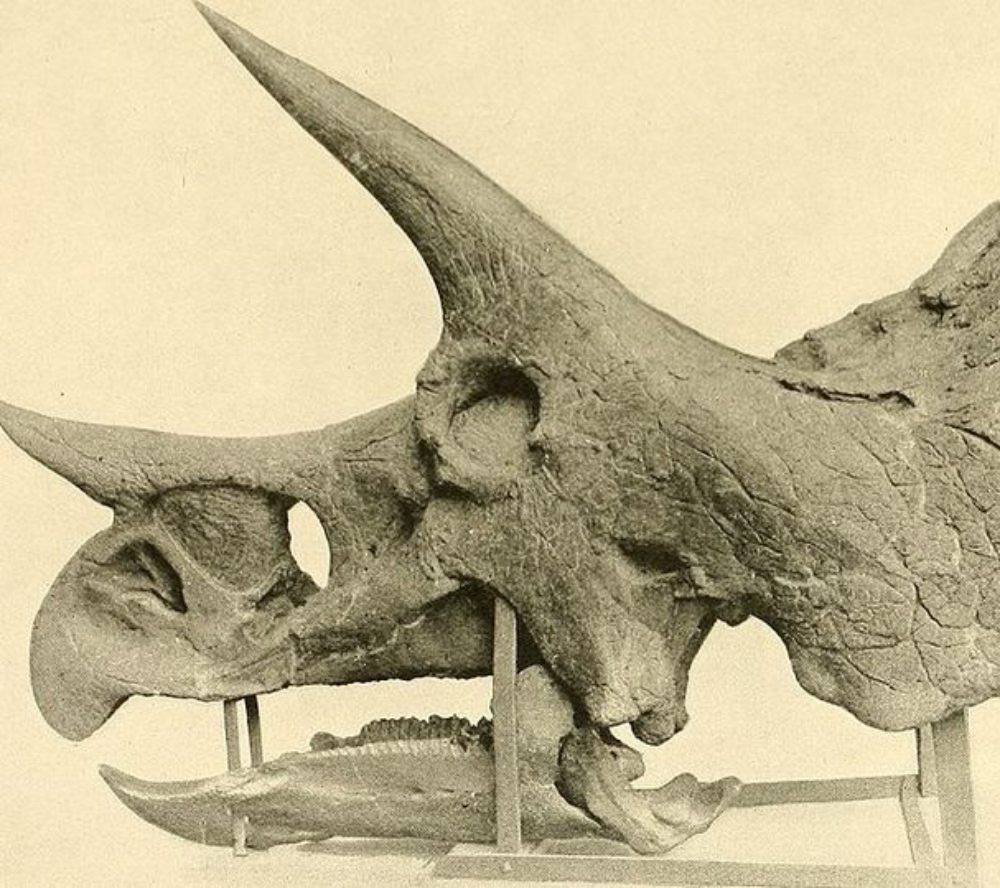This is a detailed black-and-white illustration of a Triceratops skull, a well-known dinosaur from the late Cretaceous period. The artwork captures the intricate features of this iconic ceratopsian, showcasing its large frill, two prominent brow horns, and a smaller nasal horn.

About Triceratops
-
Scientific Name: Triceratops horridus
-
Time Period: Late Cretaceous (about 68–66 million years ago)
-
Habitat: North America
-
Diet: Herbivorous
-
Size: Around 26–30 feet (8–9 meters) in length and weighing up to 12,000 kg
Triceratops was one of the last non-avian dinosaurs before the mass extinction event. It likely used its horns and frill for defense against predators like Tyrannosaurus rex, as well as for display and possibly intraspecies combat.

Anatomy Highlights in the Drawing
-
Frill (Cranial Shield): The large bony structure at the back of the skull, possibly used for protection or display.
-
Horns: Two massive, forward-pointing brow horns and a smaller nasal horn.
-
Beak: A parrot-like beak, which was perfect for cropping tough vegetation.
-
Skull Openings (Fenestration): Large openings in the skull likely helped reduce weight while maintaining strength.

Artistic Style
This drawing is an example of scientific illustration, using fine lines and shading techniques to create depth and realism. Such illustrations are often used in paleontology books, museum displays, and academic research to depict fossil reconstructions.
Would you like more historical or artistic context on Triceratops? 😊

